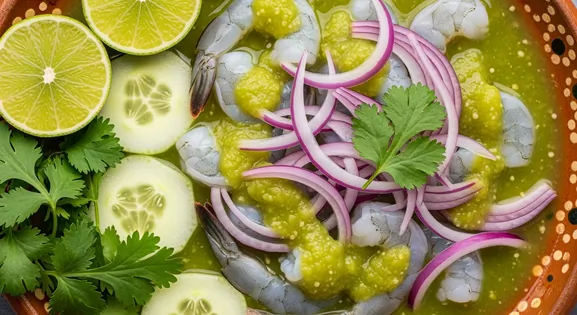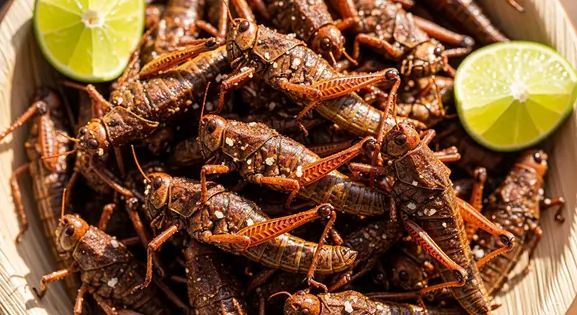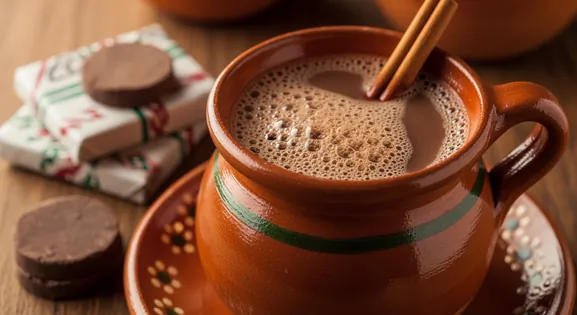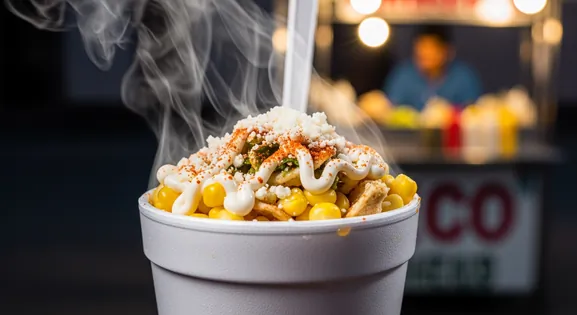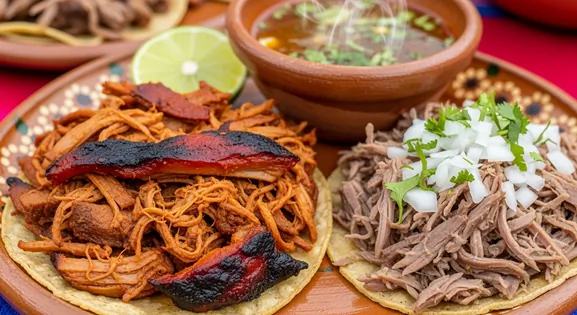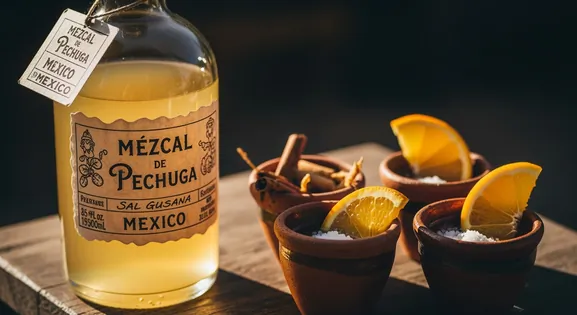Churros Rellenos in Mexico: A Complete Food Lover's Guide
Churros Rellenos
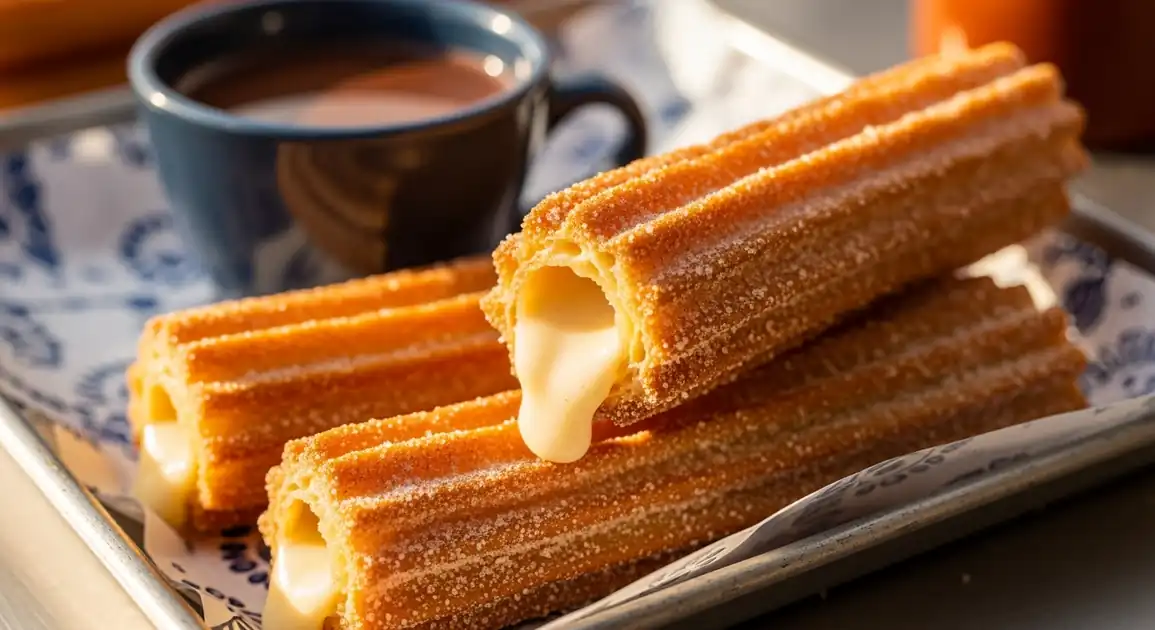
The Basics of Filled Churros
Churros Rellenos are a Mexican adaptation of the classic Spanish churro, featuring golden-brown, crispy, ridged pastries filled with sweet preparations like cajeta (goat milk caramel), chocolate, vanilla custard, or fruit preserves. These indulgent treats differ from traditional hollow churros by incorporating fillings directly into the center of the fried dough, creating a self-contained dessert experience beloved throughout Mexico.
An Authenticity Checklist
What to Look For
-
Freshly fried churros (made to order or in small batches)
Ensures proper cooking temperature is reached, killing potential bacteria, and provides the best texture. Churros should be golden-brown and crispy, not pale or soggy.
-
Clean oil that bubbles vigorously when churros are added
Properly heated, clean oil (around 180-190°C/355-375°F) ensures thorough cooking and prevents greasy, undercooked churros that could cause digestive issues.
-
Proper filling hygiene (refrigerated fillings, clean equipment)
Dairy-based and egg-based fillings (custards, some chocolates) need proper temperature control to prevent spoilage. Look for vendors who keep fillings covered and refrigerated when possible.
-
Proper handling (gloves or frequent hand washing)
Vendors should use gloves, tongs, or wash hands frequently, especially when handling both money and food.
-
High turnover and local popularity
Busy stands ensure fresher ingredients, more frequently changed oil, and generally better quality and safety standards.
What to avoid
-
Pre-filled churros sitting for extended periods
Filled churros should be prepared upon ordering or very recently. Extended time at room temperature allows bacteria to multiply in moist fillings, especially dairy-based ones like custard.
-
Visibly dirty or very dark, smoking oil
Old, reused oil can contain harmful compounds. Good vendors change oil regularly.
-
Unsanitary filling practices (same tools handling different ingredients without cleaning)
Cross-contamination can introduce bacteria or allergens. Watch how the vendor handles fillings.
-
Fillings that look separated, discolored, or have an unusual smell
These are signs of spoilage. Fresh fillings should have consistent color and texture.
-
Uncovered filling containers exposed to air, insects, or dust
Proper food safety requires covering sweet fillings that can attract insects or accumulate environmental contaminants.
How to Order Filled Churros
Classic Pairings for Filled Churros
Mexican Hot Chocolate (Chocolate de Mesa)
beverage
A rich, often spiced hot chocolate, traditionally made with water or milk and Mexican chocolate tablets that may contain cinnamon or chili. Its warmth and depth perfectly complement the sweet, fried churros, offering a comforting and traditional pairing.
Café de Olla
beverage
A traditional Mexican coffee brewed with piloncillo (unrefined whole cane sugar) and cinnamon sticks, sometimes with star anise or cloves. Its earthy, spiced notes provide a robust counterpoint to the sweetness of the churros, making it a popular morning or afternoon accompaniment.
Explore Filled Churros in Detail: City Guides
Discover where to find the best Filled Churros and learn local tips in these cities:
The Story Behind the Dish
While churros originated in Spain and Portugal, Mexico embraced and transformed them into a beloved national street dessert. Churros Rellenos represent Mexico's innovative adaptation, adding fillings to the traditionally hollow pastry. The exact origin of filled churros in Mexico is not well-documented, but they became popular in the mid-20th century as churrería stands evolved. These establishments helped popularize churros throughout the country, though many traditionally serve the unfilled Spanish style with hot chocolate for dipping.
Crafting the Perfect Dish
Churros Rellenos begin with a dough (masa) made from flour, water, salt, and sometimes butter or eggs. This dough is piped through a star-shaped nozzle directly into hot oil, creating the distinctive ridged pattern. After frying until golden and crispy (approximately 2-3 minutes), they're immediately rolled in sugar or a cinnamon-sugar mixture. While still warm, the churros are injected with fillings using a piping bag with a long, narrow tip or a specialized filling machine. The filled churros are then served immediately to maintain the ideal temperature contrast and texture.
Key Ingredients of Filled Churros
Flour (Wheat Flour)
The primary structural component, typically all-purpose wheat flour, which forms the choux-like dough. It provides the necessary gluten structure to hold the churro's shape during frying and contributes to its crispy texture.
Quality indicator: Look for a fine, consistent texture in the dough, indicating good quality flour.
Sweet Fillings (Cajeta, Chocolate, Custard)
These are the heart of Churros Rellenos, injected after frying. Cajeta (goat milk caramel) is traditional, but chocolate ganache, vanilla custard, and fruit preserves are also common. They provide a burst of flavor and a creamy contrast to the crispy exterior.
Quality indicator: Quality fillings should be smooth, rich, and have a natural flavor, not artificial or overly sweet.
Frying Oil (Vegetable Oil)
A neutral-flavored oil like vegetable, canola, or sunflower oil is essential for deep-frying the churros. The oil must be heated to a precise temperature to ensure the churros cook evenly, become golden-brown, and develop their characteristic crispness without absorbing too much grease.
Quality indicator: The oil should appear clean and clear, not dark or cloudy, indicating it's fresh and properly maintained.
Local Filled Churros Variations in Mexico
Cajeta (Caramel) Filled Churros
The most traditional Mexican filling, made with goat milk caramel that has a distinctive rich, slightly tangy flavor compared to regular caramel.
Chocolate Filled Churros
Filled with chocolate ganache or chocolate cream, often made with Mexican chocolate that has cinnamon notes.
Vanilla Custard Filled Churros
Filled with pastry cream (similar to what's found in eclairs), offering a smooth, creamy contrast to the crispy exterior.
Fruit Filled Churros
Typically filled with fruit preserves or compotes, with strawberry (fresa), guava (guayaba), and blackberry (zarzamora) being popular choices.
Condensed Milk Filled Churros
Filled with sweetened condensed milk, sometimes flavored with vanilla or dulce de leche.
Dietary Information
Dietary Information
Important Note for Travelers: Your safety is our priority. Below are the common allergens associated with the traditional preparation of this dish. However, recipes and ingredients can vary significantly between establishments. Always confirm all ingredients directly with the food vendor before ordering, especially if you have a severe allergy.
Potential Allergens
Dietary Suitability
Frequently Asked Questions about Filled Churros
What are Churros Rellenos?
Churros Rellenos are a Mexican adaptation of the classic Spanish churro. These tube-shaped fried pastries feature a crispy, ridged exterior coated in sugar, but with sweet fillings injected into their hollow center. Common fillings include cajeta (Mexican caramel), chocolate, vanilla custard, or fruit preserves. They're often enjoyed alongside hot chocolate.
How do Churros Rellenos taste?
Churros Rellenos provide a delightful contrast: a crispy, sugar-coated exterior with a soft interior. The filling adds a key dimension—cajeta offers rich caramel, chocolate brings deep cocoa, vanilla custard provides creamy elegance, and fruit fillings add tartness. The mild pastry flavor complements the sweet fillings perfectly.
Are Churros Rellenos a smart choice from street vendors?
Churros Rellenos can be a smart choice from vendors who fry them fresh at high temperatures and maintain good hygiene. Look for vendors who: fry churros to order or frequently replenish stock; keep fillings properly stored; use clean equipment; and maintain clean hands or use gloves. Avoid churros sitting out for extended periods, especially in warm weather, as moist fillings can spoil.
What's the difference between regular Churros and Churros Rellenos?
Regular churros (churros simples) are hollow fried pastries, usually dusted with cinnamon sugar and served with hot chocolate for dipping. Churros Rellenos, however, are injected with sweet fillings directly into their hollow center, creating a self-contained treat. The filled versions are often larger to accommodate the filling, offering a distinct all-in-one experience.
Are Churros Rellenos vegetarian or vegan?
Churros Rellenos are typically vegetarian, made with flour, water, salt, and sometimes butter or eggs. They are usually not vegan due to dairy-based fillings like cajeta or chocolate cream, and potential butter/eggs in the dough. Vegan versions exist but are rare, requiring plant-based dough and fillings. Always inquire about ingredients for dietary needs.
What is the best filling for Churros Rellenos?
The most popular and traditional filling in Mexico is cajeta, a goat's milk caramel with a complex, rich flavor. Chocolate is another favorite, especially when paired with hot chocolate. Vanilla custard offers subtle sweetness. While cajeta is recommended for an authentic experience, the 'best' is subjective; fruity options like strawberry or guava provide a tart contrast.
Expert How-To Guides about Filled Churros
How to Spot a Great Churros Rellenos Vendor
Find the best churros by observing these key quality indicators, ensuring you choose a vendor committed to freshness and proper preparation for a delightful experience.
- Watch for churros being fried to order or in small batches - good vendors don't let them sit for long periods.
- Check that the oil is clean and hot (bubbling vigorously) - this creates crispy, non-greasy churros.
- Look for dedicated filling equipment - quality vendors use proper piping bags or filling machines.
- Observe overall cleanliness - clean counters, gloves or regular hand washing, and covered filling containers.
- Popular stands with locals and high turnover typically maintain better quality and freshness.
- Great vendors drain excess oil from churros on paper before serving.
- Listen for the distinctive crunch when you bite in - this indicates proper frying.
How to Eat Churros Rellenos Like a Local
Enjoy this Mexican treat the authentic way, maximizing the delightful contrast of textures and flavors by following these local tips.
- Eat them while still warm - this is when the contrast between crispy exterior and soft filling is best.
- Hold using the napkin provided to avoid messy hands.
- If served with hot chocolate, some locals alternate bites of the filled churro with sips of chocolate.
- Look for the filling distribution - if uneven, start from the end where filling is visible.
- Don't be afraid of messy eating - it's part of the experience!
- For maximum enjoyment, eat immediately after the vendor fills them.
- Traditional accompaniments include café de olla (spiced coffee) or champurrado (thick chocolate drink) in cooler weather.
How to Recognize Quality Fillings in Churros Rellenos
The filling makes a huge difference in your churro experience. Learn to identify fresh, well-prepared fillings that elevate this sweet treat.
- Cajeta (caramel) should be smooth, not crystallized or overly runny.
- Chocolate filling should be richly flavored and smooth, not grainy or excessively sweet.
- Custard fillings should be creamy and set, not watery or curdled.
- Fruit fillings should contain visible pieces of fruit and not taste artificially flavored.
- Quality fillings should be generous but not overflowing or scarce.
- The temperature contrast between hot churro and slightly cooler filling is ideal.
- Avoid fillings that look separated, discolored, or have an off smell.
Our Commitment to Quality
At Tasteplorers, our mission is to provide the most accurate and useful travel information in the world. To achieve this, all content on this site is created through our unique editorial framework. We utilize leading AI research tools, guided by our proprietary prompts, and a multi-stage validation process. This entire system is overseen by our editorial team to ensure everything we publish meets our high standards for accuracy, cultural nuance, and practical value for travelers.
Learn more about our Editorial Process and our Mission.
Explore regions
Europe
Discover Europe's diverse culinary landscape, from Mediterranean flavors to hearty Alpine fare. Learn to navigate markets, decode menus, and eat like a local.
Latin America & Caribbean
Discover the vibrant cuisines of Latin America & the Caribbean. Our expert guide covers everything from Mexican street food to Peruvian ceviche and market tips.
Oceania
Explore Oceania's diverse food scene. Learn about Polynesian earth ovens, Fijian feasts, and the vibrant café culture of Australia and New Zealand.
Southeast Asia
Explore Southeast Asia's diverse food cultures from Thailand to Vietnam. Get expert tips on navigating spice levels, choosing quality vendors, and understanding the rich traditions of the region.
